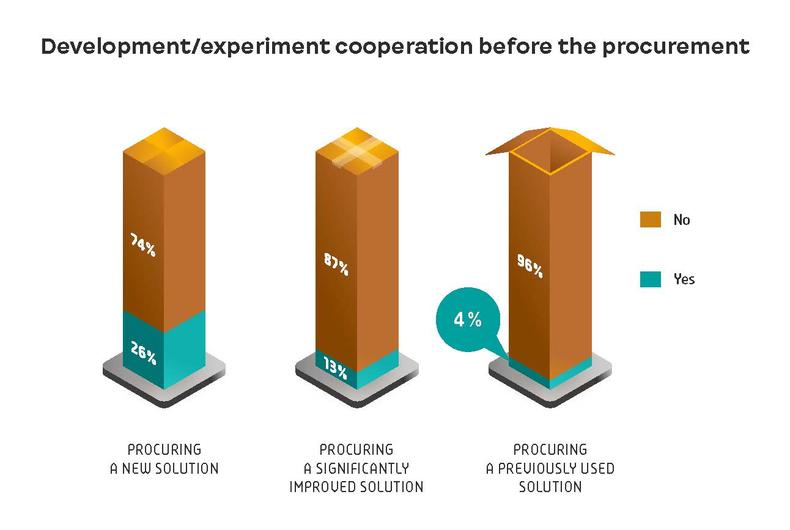Solutions that are innovative/new to the procurer and the procurement thereof in Finland
The KEINO Competence Centre for Sustainable and Innovative Public Procurement surveyed in 2018 the solutions that are innovative/new to the procurer and the procurement thereof in Finland. The content below is based on the survey.
Nearly 30% of the respondents who took part in the survey carried out by KEINO in 2018 estimated that the acquired solution was a significantly improved solution. 16% said that the procurement constituted a new solution from the organisation’s viewpoint.
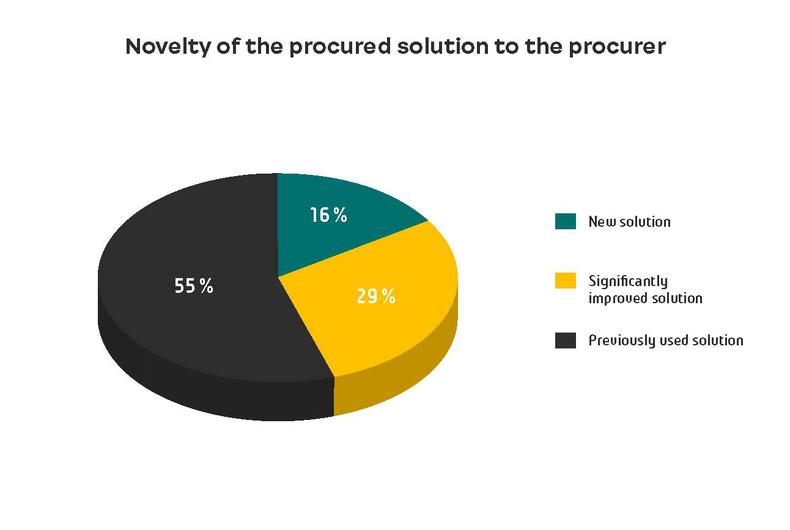
Based on our survey, the way in which the procured product, service or solution was new to the procurer to a large degree depends on the situation and the organisation. For example, it may be a question of a different scale of implementation or operating model; a procurement process that is new or comprises new elements; contractual incentives; a product or service that was not previously used; a new service provision model; a new contract form of a building contract; a new technical solution; the application of a new specific technical method; or the use of development methods of which there is no previous experience.
Based on the survey, the procurement of a solution that is completely new to the procurer is not linked to a specific procurement category (contract, service or material procurement). The novelty of the end-result of the procurement is connected more to separate procurements or invitations for tenders that are part of a wider procurement as a whole than recurring procurements with the same content.
Factors influencing the procurement of a solution that is new to the procurer
Engaging in technical or market dialogue during the procurement preparation stage is linked to the result of the procurement process being new to the procurer or, in the very least, a material improvement on the previously used solution. When it comes to the procurer’s procuring of solutions that are completely new or significantly improved, approx. 60% said that technical or market dialogue was part of the procurement preparations. (Figure 4).
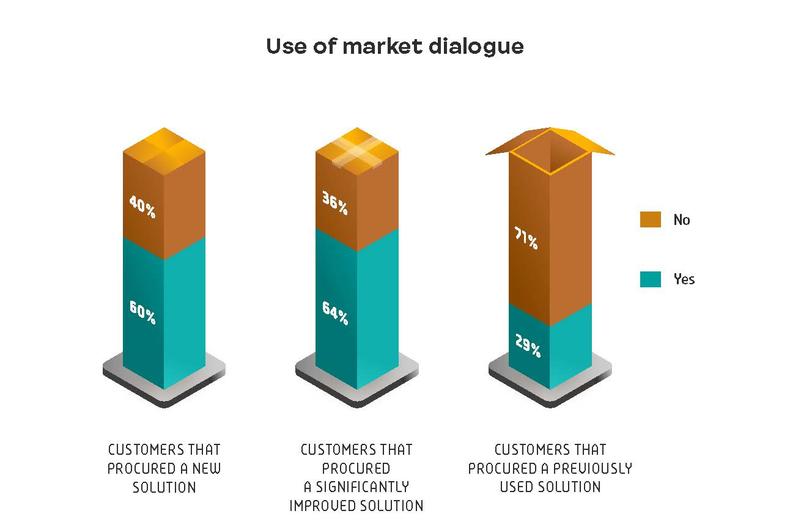
Criteria for comparing tenders
When it comes to new procurements to the procurer (an entirely new or significantly improved solution), the most commonly used benchmark was the best price-quality ratio. It was applied in approx. 66% of the procurements leading to the acquisition of an entirely new or significantly improved solution.
When it comes to the procurement of a previously used solution, the most commonly used benchmark was price. It was used as the sole criterion in approx. 50% of the cases. However, the price-quality ratio was used as a criterion almost as often, in approximately 47% of the cases.
Nearly 14% of the completely new solutions arose from procurements where the comparison took place via the use of fixed-price competitive procurement (that is, the comparison is based solely on quality). This group includes service and material procurements looking for new thoughts or service content or implementation ideas, using joint development methods or procuring new technologies that had not been previously used, etc.
Reference requirements are used in over 70% of all procurement types. From the procurer’s point of view, reference requirements were used in 86% of building contract procurements, 76% of materials procurements and 74% of service procurements that led to new solutions. The prevalence of using reference requirements is at the same level in procurements where the choice has already been made to procure a solution that was already in use.
Nearly two thirds of the solutions that were new to the procurer also included detailed specifications pertaining to technical solutions, provided services or contract plans. Detailed specifications are used most in the procurement of materials that are new to the procurer (71%). In construction projects, the figure is 67% and in service procurement the figure is 62%.
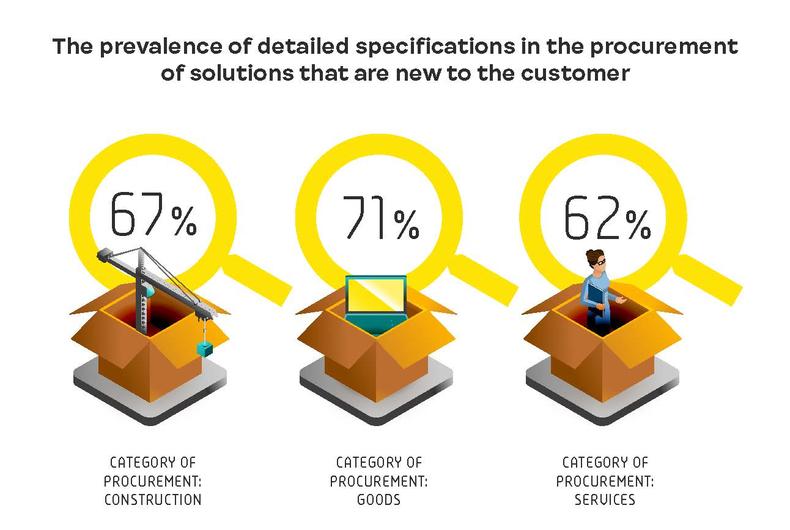
New procurement procedures
In KEINO’s survey materials, the use of new operating models is primarily linked to the procurements of completely new solutions or significantly improved solutions. Nonetheless, new procurement procedures or operating models, such as the alliance model or an innovation partnership, have only been used in 7% of the procurements covered by the survey. When it comes to the competitive procurement of construction projects, overall responsibility and the ‘plan and implement’ contract model comprising the design stage are most common.
Development elements covered by the contract
In 2018, development within the framework of a procurement contract occurred as follows:
- Completely new procurement solutions: more than 40% of the cases
- Partly new procurement solutions: more than 30% of the cases
- Procurement solutions previously used by the procurer: roughly 10% of the cases
In contrast, expert services as part of the contract are most common in the procurement of previously used solutions, and the percentage keeps dropping relative to the solution’s level of innovativeness as estimated by the respondents from the procurement organisation’s viewpoint.
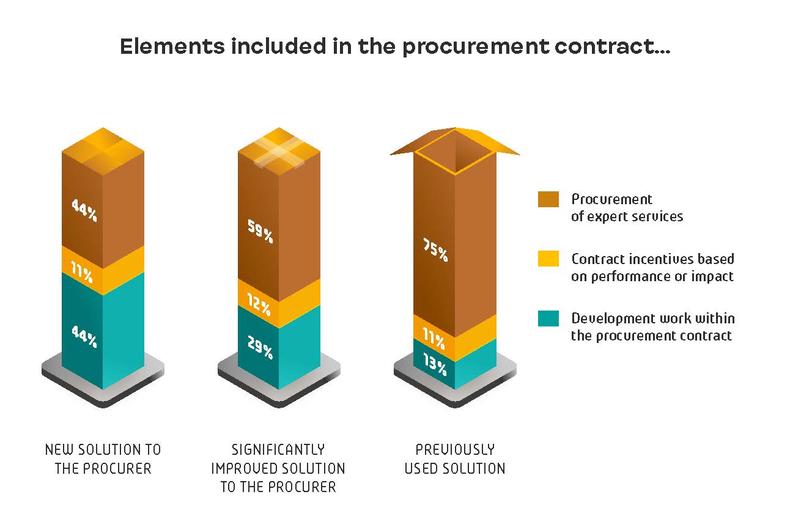
Intellectual property rights to the results of development work
In public procurement in Finland, there is a link between the novelty value of the procurement and the terms and conditions contained in the intellectual property rights pertaining to the development work that has taken place within the framework of the procurement contract as well as the way the intellectual property rights to the development results are divided.
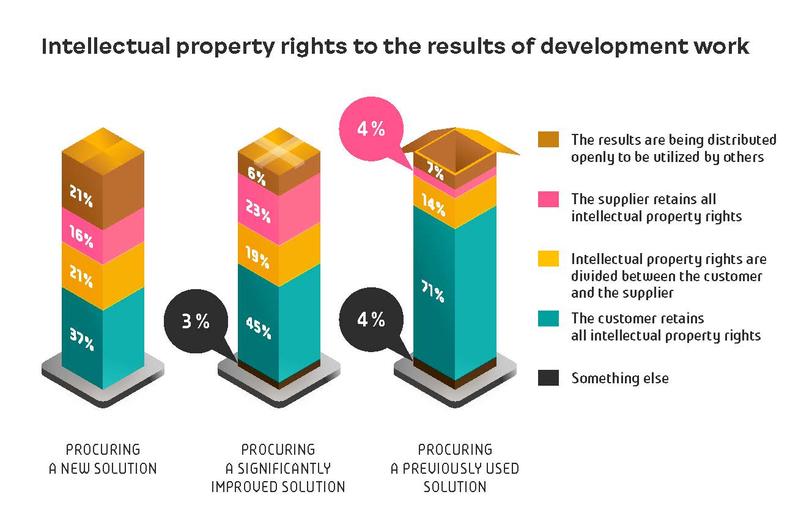
When it comes to the procurement of a previously used solution, the procurer retains the rights to the potential development results only in 75% of the cases.
When it comes to the procurement of a significantly improved or completely new solution, the intellectual property rights are distributed clearly more evenly.
Cooperation pertaining to the development of a new solution or experimentation prior to the procurement is connected to the solution’s experienced novelty value from the procurer’s point of view. That is to say that cooperation is more common, if the solution subject to the procurement is a significantly improved or completely new solution for the procurement organisation. Previous cooperation may refer to a separate research project or a preliminary assessment, market survey, dialogue or target setting conducted with suppliers or to experiments or pilot projects.
